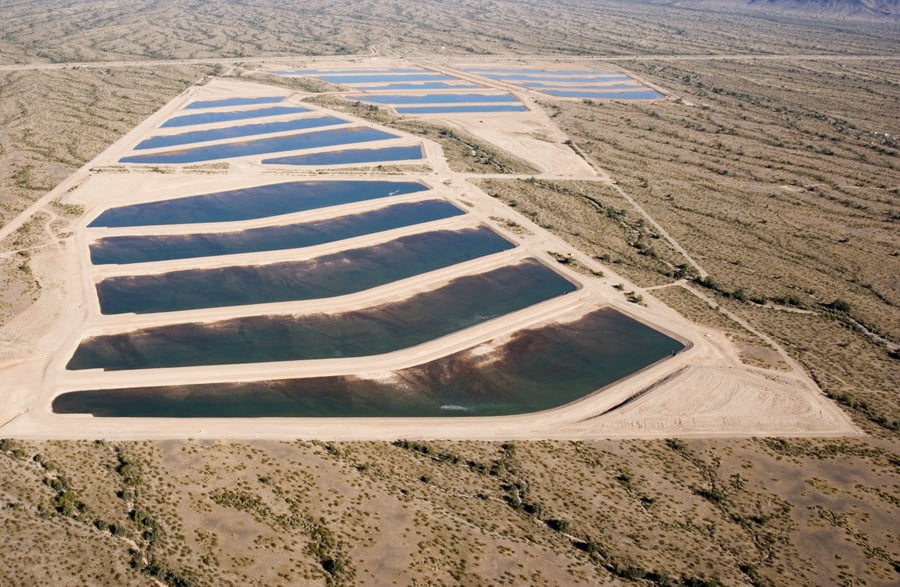By Chris Peters, P.G., and Juliet McKenna, P.G.
M&A has the expertise to assist with water supply and permitting to meet the growing demand for green hydrogen.
Decarbonization and the growing demand for hydrogen
The United States government has committed to reducing greenhouse gas emissions by 50% in 2030 (White House Fact Sheet, 2021), an aggressive target which will require developing new energy sources, including hydrogen.
Hydrogen is produced by splitting water into hydrogen and oxygen. Present-day hydrogen applications include fuel for material handling equipment (forklifts) and data center backup power generators. Wider adoption of hydrogen as fuel is projected over the next decade and beyond by other market sectors, including transportation, power generation, and industrial production. A recent study by the Fuel Cell and Hydrogen Energy Association (FCHEA) projects a U.S. annual hydrogen demand of 17M metric tons by 2030 rising to 63M metric tons by 2050 (FCHEA, 2022).

What is green hydrogen and why is Arizona an attractive location?
Most hydrogen is currently produced from natural gas using steam methane reforming, a process that releases greenhouse gases leading to what the industry calls “gray” or “blue” hydrogen. “Green” hydrogen is produced from water using renewable energy, such as solar power. Unlike other hydrogen sources, green hydrogen does not produce greenhouse gases.
The recent passage of the Inflation Reduction Act of 2022 has stimulated investment in green hydrogen projects. Arizona is an attractive location for green hydrogen production facilities because of its abundant sunshine for solar power, undeveloped land, and proximity to the California market.
How M&A can help
While it is one of the most arid states in the country, Arizona may help satisfy the total projected U.S. hydrogen demand by 2030. Nine units of water are required to produce a single unit of hydrogen (Beswick and others, 2021). Some may consider using a small fraction of the state’s 7-million-acre-foot annual water use for green hydrogen production to be a beneficial use of Arizona’s limited water resources.
Sourcing a reliable supply of water, complying with Arizona water law and regulations, and avoiding impacts to other water users will be critical for successful green hydrogen projects in Arizona. M&A professionals have the following experience that could be helpful to this process.
- Our hydrogeologists have worked in all of Arizona’s major groundwater basins and can identify areas with sufficient groundwater quantity and quality for green hydrogen production.
- M&A experts can identify alternatives to local groundwater supplies and opportunities for conveying these supplies.
- M&A staff have experience with water resources aspects of state and federal permitting that may be required for green hydrogen production facilities, including National Environmental Policy Act (NEPA). M&A has a key role in permitting two major mining projects in Arizona and understands the complexities associated with NEPA as well as other federal and state permitting.
- Groundwater withdrawals within an Active Management Area (AMA) may require a drawdown impact evaluation under Arizona Department of Water Resources (ADWR) M&A staff have decades of experience conducting drawdown impact evaluations for clients throughout Arizona.
- M&A hydrogeologists can design supply wells and determine appropriate well spacing to avoid excessive drawdown.
- Some green hydrogen projects may include a salt cavern storage component. M&A has experience identifying locations with favorable geology for cavern construction. We understand state and federal regulations applicable to salt cavern construction and brine disposal.
Example Project: Preliminary Water Supply Assessment for Solar-Powered Green Hydrogen Generating Facility
In 2022, M&A was hired by an energy company to identify a water supply for a proposed green hydrogen facility in Arizona. Our objectives for this project were as follows:
- Compile information on groundwater conditions
- Develop a preliminary assessment of local groundwater supply for the project
- Identify alternative water supplies
Local groundwater supplies are the most convenient supply for the project. M&A studied the regional geology and hydrogeology of the underlying aquifer and evaluated water supplies that are physically and legally available in sufficient quantities to meet the project’s water demands. We conducted groundwater modeling and recommended collecting additional hydrogeologic information to determine the feasibility of using local groundwater supplies to support the long-term project demands. Given the limited capacity of the local aquifer, we also evaluated alternative water supplies to local groundwater including imported groundwater, long-term storage credits, Colorado River water, effluent, and storm water.
References
Beswick, R.R., Oliveira, A.M., and Y. Yan, 2021. Does the Green Hydrogen Economy Have a Water Problem? ACS Energy Letters, v. 6., pp. 3167-3169. https://pubs.acs.org/doi/10.1021/acsenergylett.1c01375. Accessed September 13, 2022.
“Fact Sheet: President Biden Sets 2030 Greenhouse Gas Pollution Reduction Target Aimed at Creating Good-Paying Union Jobs and Securing U.S. Leadership on Clean Energy Technologies.” The White House. The United States Government, April 22, 2021. https://www.whitehouse.gov/briefing-room/statements-releases/2021/04/22/fact-sheet-president-biden-sets-2030-greenhouse-gas-pollution-reduction-target-aimed-at-creating-good-paying-union-jobs-and-securing-u-s-leadership-on-clean-energy-technologies/
Fuel Cell and Hydrogen Energy Association (FCHEA), 2022. Road Map to a US Hydrogen Economy. https://www.fchea.org/us-hydrogen-study. Accessed September 13, 2022.










